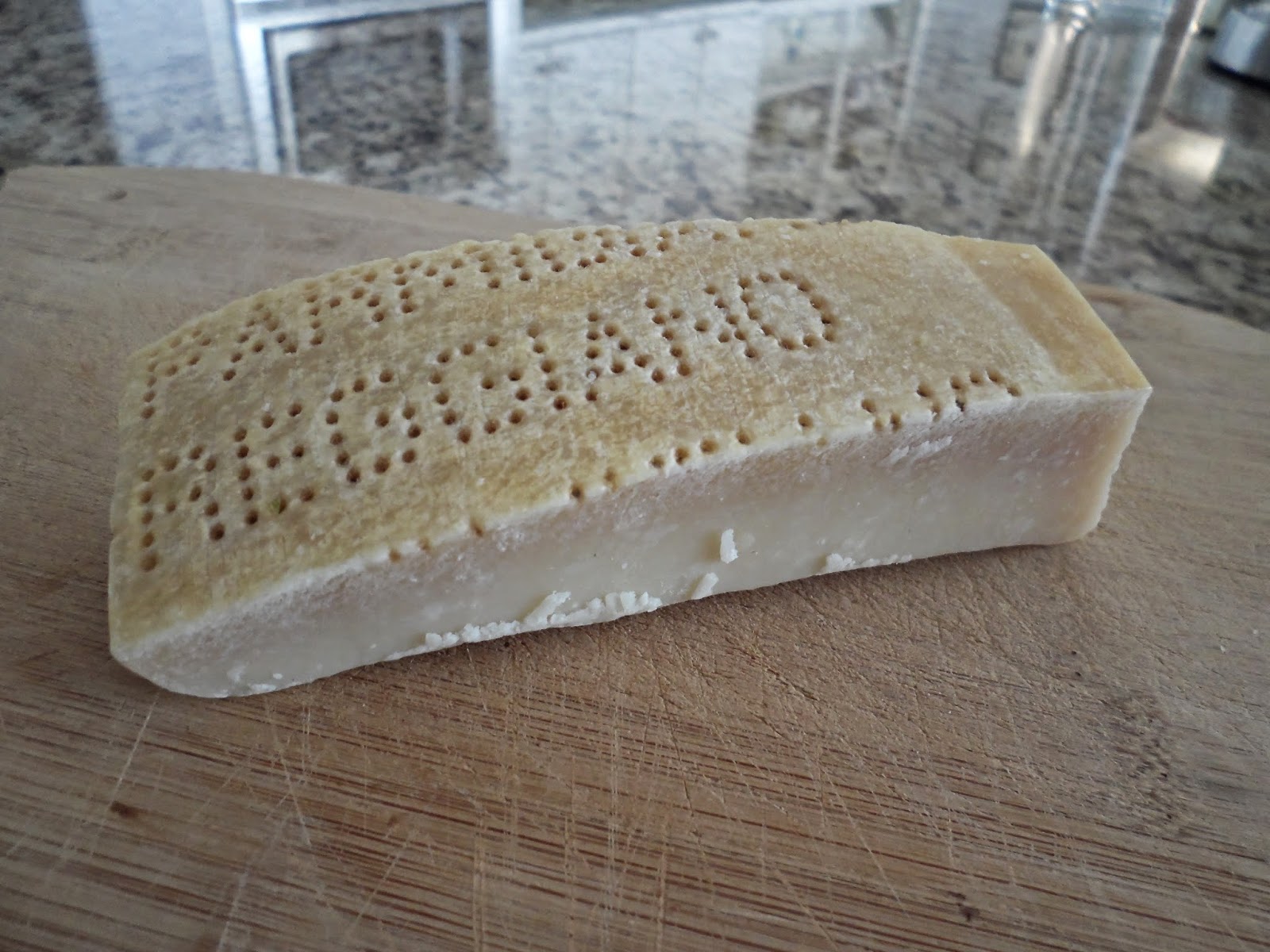However, authentic Parmigiano-Reggiano is not cheap. To buy a little block that weighs just a few ounces can cost $8-$15. That seems quite steep if it is not even the main ingredient. That's why many people have opted to garnish their food with "grated Parmesan cheese" instead, the powdery cheese-flavored dairy product, which is not even real cheese. Here is an in-depth article about Parmesan cheese by Forbes food write Larry Olmsted.
And what about the hard crust? If you buy a piece of Parmigiano-Reggiano with the crust (which is crucial to identify its authenticity, I will explain later), at least 15% of the block is the crust. It seems like such a waste to throw it away. But it's so hard! Is it even edible?
Don't worry. I am here to share with you how to identify authentic Parmigiano-Reggiano and what to do with the leftover crust!
Parmigiano-Reggiano is named after the area where it is produced. For thousands of years, it has been produced in Parma, Reggio Emilia, Bologna, Modena, and Mantova, Italy. Under Italian law, only cheese produced in these regions can be labelled "Parmigiano-Reggiano".
The making of Parmegiano-Reggiano is a long and slow process.
First class Parmegiano-Reggiano that passes the test is marked with the signature dotted "Parmegiano-Reggiano" inscription all-around the wheel.
Second class Parmegiano-Reggiano that doesn't meet all the PDO requirements, the dotted "Parmegiano-Reggiano" inscription is crossed-over with parallel horizontal lines.
The most inferior Parmegiano-Reggiano, the dotted "Parmegiano-Reggiano" inscription is scratched away and removed all-together!
Cheese that has matured longer, for 18 months, is marked with an additional "Extra" or "Export" sign.
This is why when purchasing or ordering Parmigiano-Reggiano, the crust and its inscription are crucial!
But what to do with the crust when you have already finished the center of the cheese?
Believe it or not, the crust is made of the exact same ingredients as the center of the cheese. The hard crust is formed naturally during the resting and air-drying process. Therefore it is absolutely edible!
You can cut a chunk and add it to:
- pasta
- rice
- risotto
- sauce
- stew
- soup
As the cheese melts away, it adds cheesy and salty flavors to the dish. It won't melt completely, just discard it when the dish is finished cooking. I have even heard the Italians give the crust to babies who are teething and let them suck on them as natural pacifiers!
Share with me you favorite ways to eat Parmegiano-Reggiano!

No comments:
Post a Comment